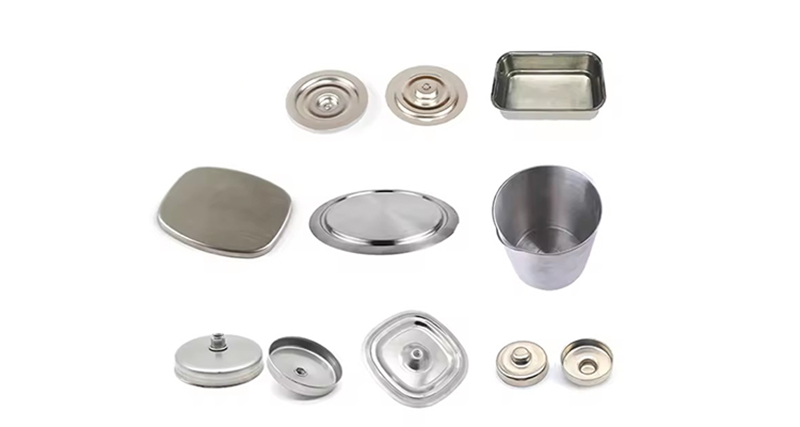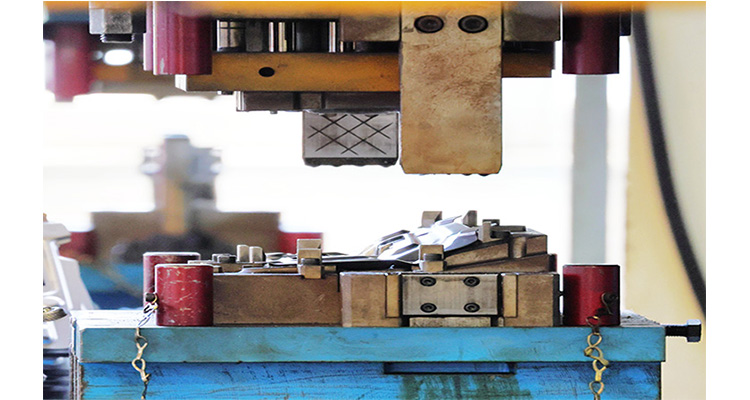Sheet metal stamping parts are components formed by applying pressure to flat metal sheets using dies and mechanical or hydraulic presses.Through this process, metal is cut, bent, drawn, or formed into specific shapes with high accuracy and repeatability.

Process
The stamping process begins with material preparation, typically using coils or sheets of steel, stainless steel, aluminum, brass, or copper. The material is then fed into a press equipped with precision-engineered dies. Under immense force, the die shapes the metal through a series of operations, such as:
Blanking: Cutting out the initial shape of a part.
Piercing: Punching holes or cutouts.
Bending and Flanging: Creating angles and edges.
Drawing: Stretching the metal into a cavity to form deeper shapes.
Coining: Applying high pressure for detailed features and smooth edges.
Many modern stamping lines use progressive or transfer dies, allowing multiple operations to occur within a single press stroke — dramatically improving production speed and efficiency.
Types
Sheet metal stamping can be divided into several key categories:
Progressive Die Stamping – The metal strip moves through multiple stations, each performing a different operation. Ideal for high-volume production.
Transfer Die Stamping – Individual parts are transferred between stations, suitable for larger or deeper components.
Compound Die Stamping – Several actions take place simultaneously in one press, used for precise, smaller parts.
Each method provides unique benefits depending on part geometry, material, and production volume.
Professional Services and Capabilities
Modern stamping service providers offer completebilities include:
Design and engineering support using CAD/CAM software.
Tool and die manufacturing for custom parts.
Stamping production with high-speed, automated presses.
Secondary operations such as tapping, welding, and assembly.
Surface treatments like plating, powder coating, or anodizing.
Quality assurance and inspection with digital measurement systems.
These integrated services ensure consistent quality, shorter lead times, and optimized costs, making them invaluable for OEMs and suppliers across industries.

Advantages
Sheet metal stamping remains one of the most efficient and economical metal-forming processes, offering numerous benefits:
High Precision and Consistency: Perfect for mass production with minimal variation.
Excellent Strength and Durability: Retains material integrity and stability.
Low Unit Cost: Ideal for high-volume manufacturing after initial tooling investment.
Speed and Efficiency: High-speed presses deliver large quantities in short cycles.
Material Versatility: Suitable for ferrous and non-ferrous metals.
Scalability: Seamlessly supports both prototype and full-scale production.
These advantages make stamping the preferred choice for manufacturers seeking cost-effective precision and reliability.
Applications Across Industries
Sheet metal stamping parts are used across nearly every sector of modern manufacturing, including:
Automotive: Body panels, brackets, clips, and reinforcements.
Electronics: Casings, connectors, and shielding components.
Appliances: Enclosures, hinges, and internal supports.
Construction: Fixtures, panels, and hardware.
Aerospace and Energy: Lightweight and high-strength structural components.
With the rise of electric vehicles, renewable energy systems, and smart devices, the need for precision metal stamping continues to grow worldwide.
The Future of Stamping
The industry is entering a new era driven by automation, digitalization, and sustainability. Smart stamping lines with robotic handling, AI-based quality monitoring, and real-time data analytics are revolutionizing production. Meanwhile, the development of high-strength lightweight materials ensures that stamping remains critical to next-generation manufacturing.
Conclusion
From small precision clips to large structural panels, sheet metal stamping parts are at the heart of industrial innovation.
Combining speed, accuracy, and scalability, stamping technology continues to push the boundaries of what’s possible in modern production.
As global industries strive for higher performance and lower costs, stamping remains an indispensable process — shaping the products and progress of tomorrow.

